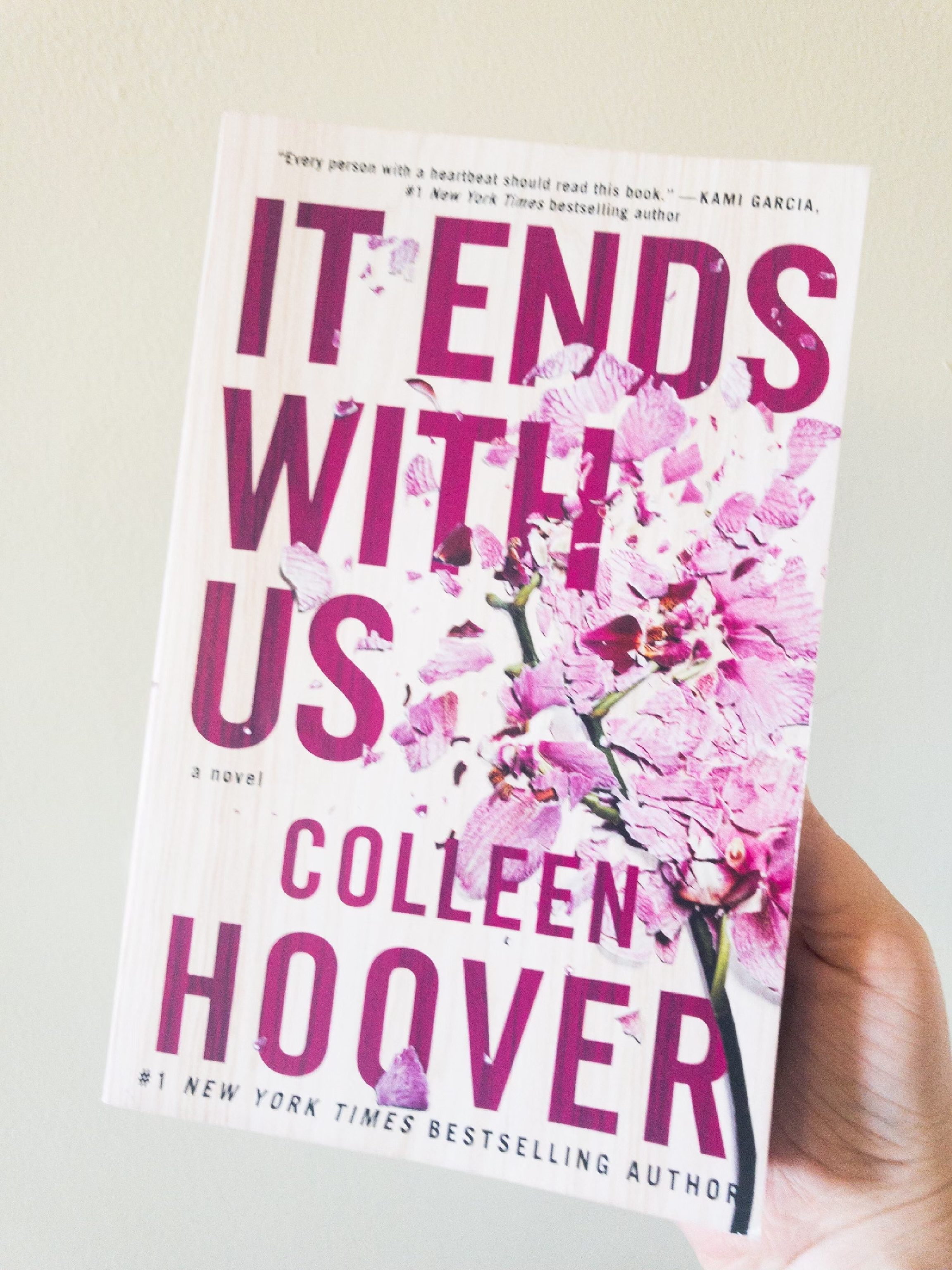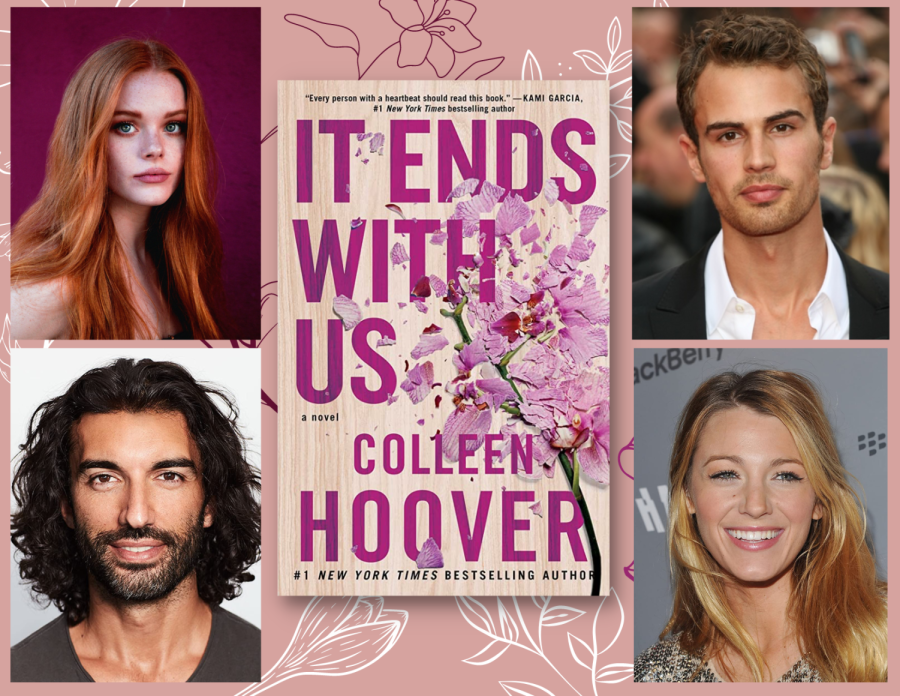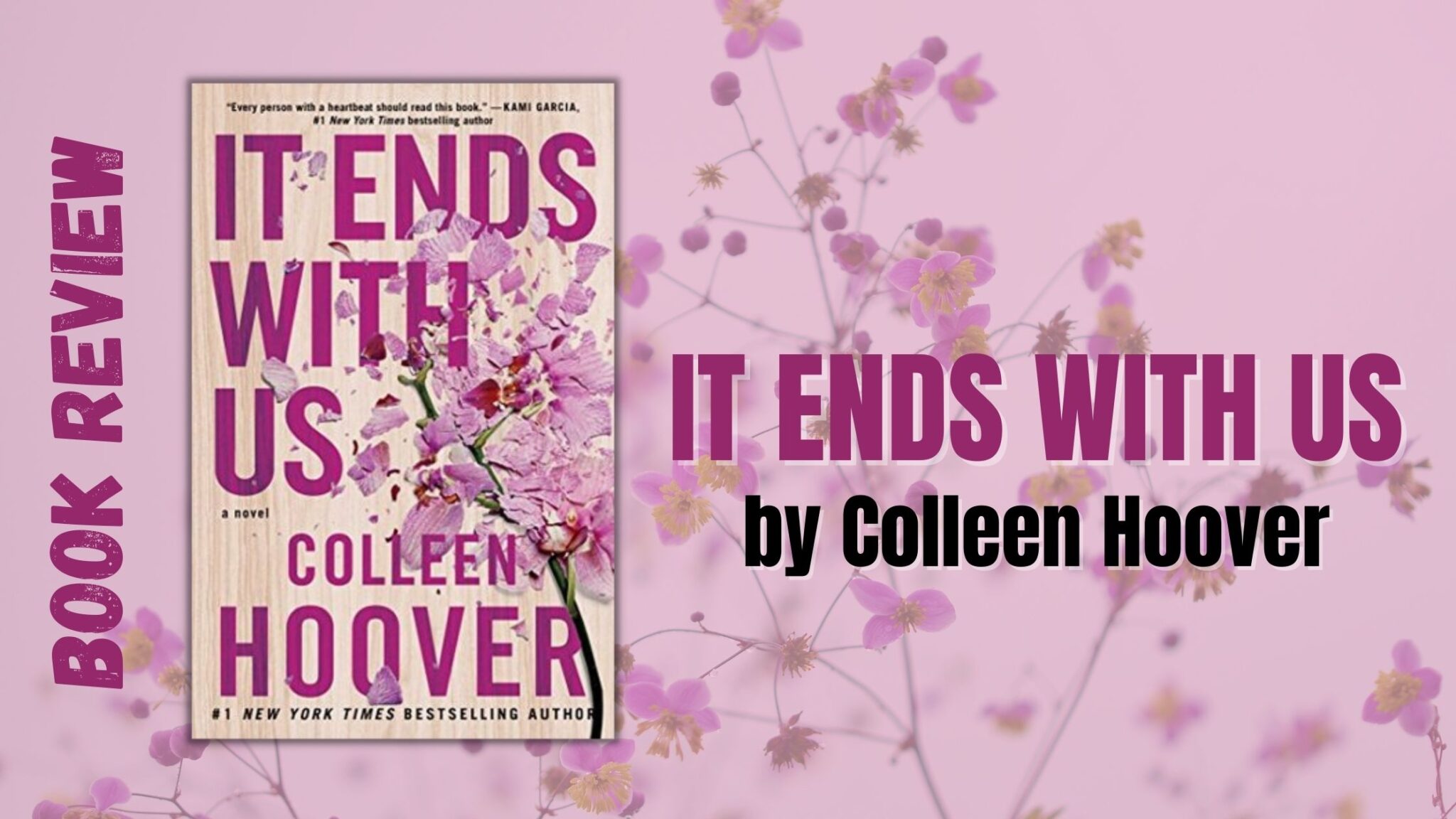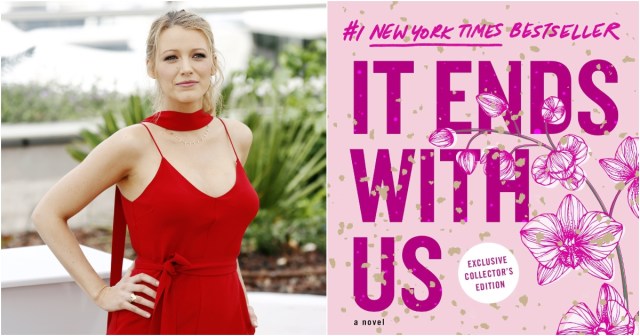It Ends With Us: A Comparative Analysis of the Book and Movie
Related Articles: It Ends With Us: A Comparative Analysis of the Book and Movie
Introduction
With great pleasure, we will explore the intriguing topic related to It Ends With Us: A Comparative Analysis of the Book and Movie. Let’s weave interesting information and offer fresh perspectives to the readers.
Table of Content
- 1 Related Articles: It Ends With Us: A Comparative Analysis of the Book and Movie
- 2 Introduction
- 3 It Ends With Us: A Comparative Analysis of the Book and Movie
- 3.1 The Book: A Deep Dive into Emotional Complexity
- 3.2 The Movie: A Visual Interpretation of a Beloved Story
- 3.3 Key Differences Between the Book and Movie
- 3.4 Related Searches
- 3.5 FAQs
- 3.6 Tips for Enjoying It Ends With Us
- 3.7 Conclusion
- 4 Closure
It Ends With Us: A Comparative Analysis of the Book and Movie

Colleen Hoover’s It Ends With Us, a poignant tale of love, loss, and resilience, has captivated readers worldwide. The novel, published in 2016, explores the complex dynamics of relationships, the enduring impact of trauma, and the transformative power of self-discovery. In 2023, the book was adapted into a film, sparking renewed interest and prompting comparisons between the two mediums.
This analysis delves into the nuances of both the book and the movie, examining their strengths, weaknesses, and deviations from each other. By exploring the key themes, character portrayals, and overall narrative structure, this comparative review aims to provide a comprehensive understanding of It Ends With Us in its literary and cinematic forms.
The Book: A Deep Dive into Emotional Complexity
It Ends With Us is a compelling narrative driven by its intricate characters and their emotional journeys. The book delves into the complexities of love, showcasing both its intoxicating allure and its devastating consequences.
Strengths of the Book:
- Intimate and Detailed Character Development: Hoover excels at creating characters that feel real and relatable. The reader experiences the internal struggles of Lily, Ryle, and Atlas through their thoughts, feelings, and actions. The book offers a nuanced portrayal of their motivations, flaws, and vulnerabilities, fostering a deeper understanding of their choices.
- Exploration of Trauma and Abuse: The novel tackles sensitive topics like domestic violence and its long-term impact on individuals and relationships. Hoover handles these themes with sensitivity and authenticity, showcasing the complexities of abuse and the challenges of healing.
- Emotional Resonance: The raw emotions portrayed in the book resonate deeply with readers. The characters’ struggles with love, loss, and self-discovery evoke empathy and introspection, prompting readers to confront their own experiences and perspectives.
- Thought-Provoking Themes: It Ends With Us raises important questions about love, commitment, forgiveness, and the choices we make in the face of adversity. The book encourages readers to reflect on their own values and beliefs, fostering meaningful conversations about personal growth and resilience.
Weaknesses of the Book:
- Repetitive Narrative: The book can feel repetitive at times, with certain themes and events revisited repeatedly. This can potentially slow down the pacing and detract from the narrative flow.
- Lack of Diverse Representation: The book features a predominantly white cast, which limits its representation of diverse experiences and perspectives.
The Movie: A Visual Interpretation of a Beloved Story
The movie adaptation of It Ends With Us aims to capture the essence of the book’s emotional impact and bring its characters to life on screen. It features a talented cast and a visually appealing aesthetic, but it also faces challenges in translating the book’s complexities to the screen.
Strengths of the Movie:
- Strong Performances: The movie benefits from strong performances by the lead actors, Blake Lively and Justin Baldoni, who bring depth and authenticity to their respective roles. Their chemistry and emotional range contribute significantly to the film’s emotional impact.
- Visual Storytelling: The movie effectively utilizes visual elements to convey the emotional turmoil experienced by the characters. The use of lighting, camera angles, and music enhances the emotional intensity of key scenes.
- Accessibility and Appeal: The movie’s adaptation allows a wider audience to experience the story, reaching those who may not have read the book. It provides a visual and cinematic interpretation of the narrative, appealing to a broader demographic.
Weaknesses of the Movie:
- Condensed Narrative: The movie’s adaptation necessitates a condensed narrative, which can feel rushed at times. Certain plot points and character development are streamlined, potentially sacrificing depth and nuance.
- Departure from the Book: The movie deviates from the book in certain aspects, including character arcs and plot details. These changes, while intended to improve the film’s pacing and cinematic appeal, may disappoint fans who are familiar with the book.
- Lack of Internal Monologues: The movie struggles to convey the internal thoughts and feelings of the characters, which are central to the book’s emotional impact. This limitation can make the characters’ motivations and actions feel less nuanced and relatable.
Key Differences Between the Book and Movie
Character Development:
- Ryle: In the book, Ryle’s character is more complex and nuanced, showcasing his struggles with anger and his attempts to control his behavior. The movie simplifies his character, portraying him more as a stereotypical abuser.
- Atlas: The book provides a more detailed exploration of Atlas’s past and his relationship with Lily. The movie streamlines his character, focusing primarily on his romantic relationship with Lily.
Plot Points and Themes:
- Lily’s Career: The movie downplays Lily’s career as a florist, focusing more on her relationship with Ryle. The book emphasizes her career aspirations and its significance in her personal growth.
- Abuse and Trauma: The movie handles the theme of domestic violence with less depth and nuance compared to the book. It focuses more on the physical aspects of abuse, while the book explores its psychological and emotional impact.
Overall Tone and Atmosphere:
- Book: The book’s tone is more introspective and emotionally intense, allowing readers to delve into the characters’ internal struggles.
- Movie: The movie’s tone is more dramatic and cinematic, focusing on the external events and visual elements to convey the story.
Related Searches
- It Ends With Us Movie Review: Reviews of the film adaptation, focusing on its strengths, weaknesses, and overall effectiveness in translating the book to the screen.
- It Ends With Us Book vs Movie Differences: Comparisons between the book and the movie, highlighting key differences in character development, plot points, and themes.
- It Ends With Us Ending Explained: Explanations of the book’s and movie’s endings, analyzing their impact on the overall narrative and character arcs.
- It Ends With Us Characters: Detailed information about the main characters in the book and movie, exploring their motivations, relationships, and development.
- It Ends With Us Book Summary: A concise summary of the book’s plot, highlighting key events and character relationships.
- It Ends With Us Movie Cast: Information about the actors who portray the characters in the movie adaptation, including their previous work and contributions to the film.
- Colleen Hoover Books: A list and descriptions of Colleen Hoover’s other books, exploring their themes, genres, and popularity.
- Domestic Violence Awareness: Resources and information about domestic violence, its impact on individuals and families, and available support services.
FAQs
1. Is the It Ends With Us movie faithful to the book?
The movie is generally faithful to the book’s main plot points, but it makes significant changes to character development, plot details, and the overall tone. While it captures the essence of the story, it sacrifices some of the book’s depth and complexity.
2. Should I read the book before watching the movie?
Reading the book before watching the movie is highly recommended. The book provides a richer and more nuanced exploration of the characters and their relationships, offering a deeper understanding of the themes and emotional impact of the story.
3. What are the main themes of It Ends With Us?
The book and movie explore themes of love, loss, trauma, abuse, forgiveness, self-discovery, and resilience. They examine the complexities of relationships, the enduring impact of past experiences, and the importance of finding strength and healing.
4. What are the differences between the book and movie endings?
The movie’s ending deviates significantly from the book’s ending. While the book’s ending is more ambiguous and leaves room for interpretation, the movie provides a more definitive and conclusive resolution.
5. Is It Ends With Us a good book for book clubs?
It Ends With Us is a popular choice for book clubs due to its engaging narrative, relatable characters, and thought-provoking themes. It provides ample opportunities for discussion and reflection on love, relationships, and personal growth.
Tips for Enjoying It Ends With Us
- Read the book first: If you’re a fan of the book, reading it before watching the movie will enhance your experience. It will provide a deeper understanding of the characters and their motivations, allowing you to appreciate the nuances of the story.
- Be aware of the differences: Be prepared for deviations from the book’s plot and character development. The movie makes changes to adapt the story for the screen, which may not align perfectly with the book’s narrative.
- Focus on the emotional impact: Both the book and the movie aim to evoke strong emotions. Allow yourself to experience the characters’ struggles and triumphs, engaging with the themes of love, loss, and resilience.
- Engage in discussion: After reading the book or watching the movie, engage in discussions with others about the story, characters, and themes. Sharing your thoughts and perspectives can deepen your understanding and appreciation of the narrative.
Conclusion
It Ends With Us is a powerful story that resonates with readers and viewers alike. The book offers a nuanced and emotionally charged exploration of love, loss, and resilience, while the movie provides a visually appealing and accessible adaptation. While the two mediums differ in their approach to character development, plot details, and overall tone, both offer a compelling and thought-provoking experience. Ultimately, both the book and the movie encourage readers and viewers to reflect on the complexities of relationships, the enduring impact of trauma, and the importance of self-discovery and healing.








Closure
Thus, we hope this article has provided valuable insights into It Ends With Us: A Comparative Analysis of the Book and Movie. We thank you for taking the time to read this article. See you in our next article!